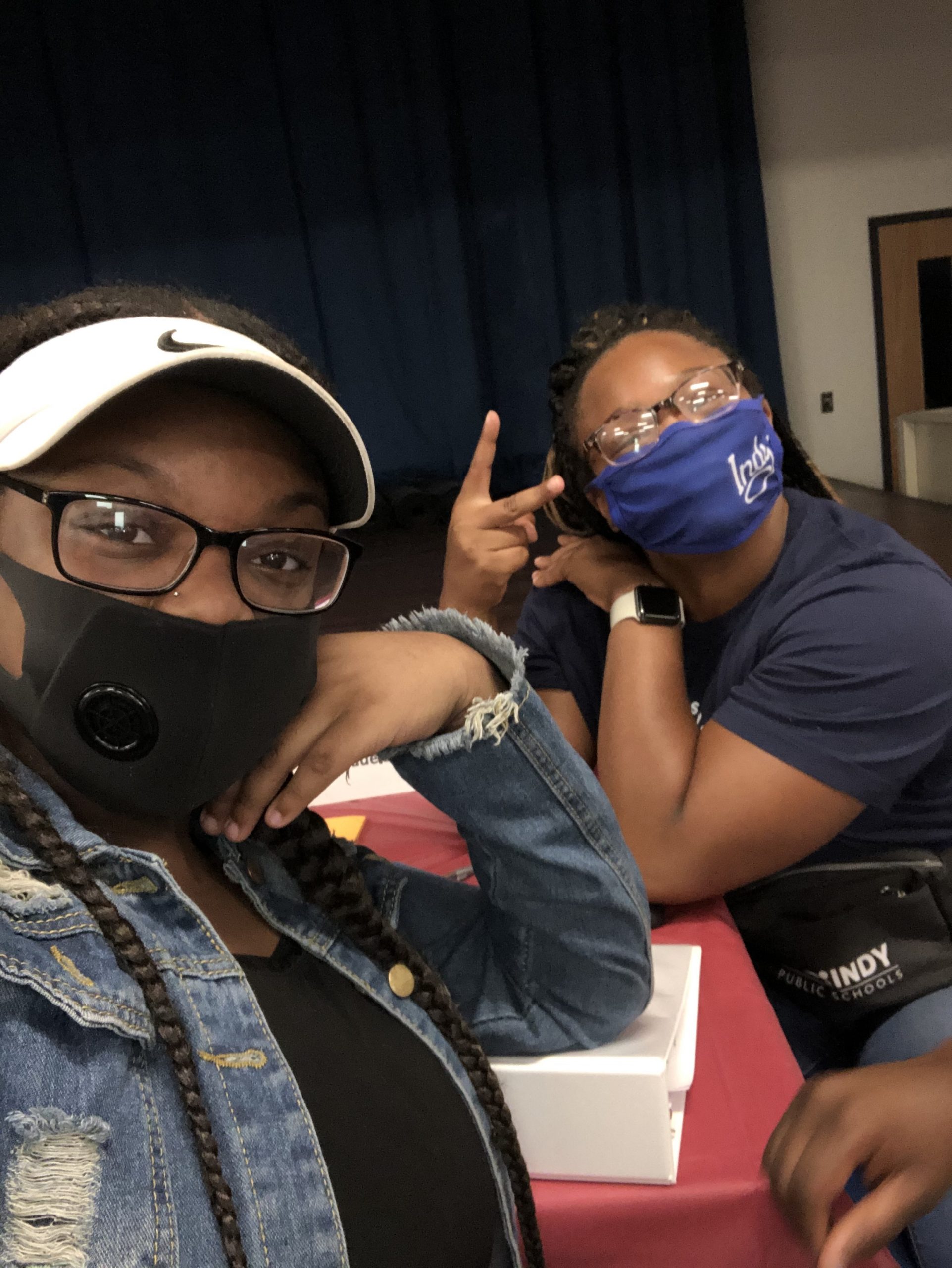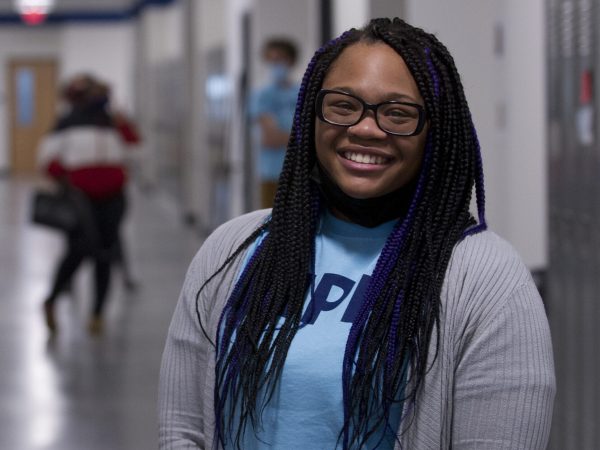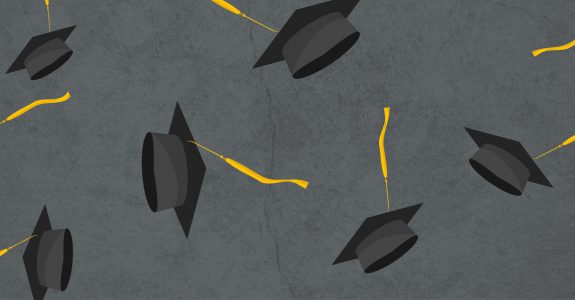Since she began teaching nearly four years ago, what Ashya Thomas has loved most about the profession is connecting with students on a personal level. The 25-year-old Ball State University alumna loves sharing her own experiences with students in a way that’s relatable, thereby earning their trust and enticing them to listen to her.
So when Indianapolis’ KIPP Indy Legacy High School, where Ashya has taught since January 2020, transitioned to virtual instruction in March with the dawn of the COVID-19 pandemic, Ashya worried about her ability to keep the fledgling bonds she had made with her students strong. This was especially true for those students with whom she had interacted regularly in small groups in the three months she taught in person prior to going virtual.
“When we switched and went virtual, I remember being so down about not being able to be with that small block of kids because I knew I had helped them so much in person,” Ashya said. “That uncertainty put a fear in me because I was outside my normal comfort zone. I had to start all over. I felt like a first-year teacher again.”
With the support of a strong school leadership team, Ashya has leaned into her new role as a remote instructor. And not only has she made it, she’s thrived – and strengthened her bond with her students.
Ashya’s school is part of a national network of public charter schools that prides itself on promoting academic rigor and forging deep relationships with students and families. Even with the limitations imposed by the pandemic, the staff has doubled down on the network’s core principles.
Early in the first phase of eLearning last spring, Ashya’s school sent students home with Google Chromebooks to ensure they could access online instruction. Teachers and school leaders quickly learned how many of their families – many of whom are low-income – lack access to high speed internet. So, the school’s tech team dropped off Wi-Fi hotspots at families’ houses, along with other equipment such as computer chargers.
 The needs at Ashya’s school reflect similar gaps across Indianapolis, where 25% of the city’s 152,000 district and public charter school students lacked high-speed home internet access at the start of the pandemic. The Richard M. Fairbanks Foundation is among a cohort of funders who are working to address this digital divide through the $3.5 million Indianapolis eLearning Fund, which has supported creative investments to assist families and educators like Ashya to successfully navigate eLearning. The Indianapolis eLearning Fund also submitted an application to the Governor’s Emergency Education Relief (GEER) Fund on behalf of the city’s 11 school districts, 50 charter schools and more than 60 private schools, and was awarded an additional $11.5 million in federal relief funding for home internet connectivity and devices (e.g., laptops).
The needs at Ashya’s school reflect similar gaps across Indianapolis, where 25% of the city’s 152,000 district and public charter school students lacked high-speed home internet access at the start of the pandemic. The Richard M. Fairbanks Foundation is among a cohort of funders who are working to address this digital divide through the $3.5 million Indianapolis eLearning Fund, which has supported creative investments to assist families and educators like Ashya to successfully navigate eLearning. The Indianapolis eLearning Fund also submitted an application to the Governor’s Emergency Education Relief (GEER) Fund on behalf of the city’s 11 school districts, 50 charter schools and more than 60 private schools, and was awarded an additional $11.5 million in federal relief funding for home internet connectivity and devices (e.g., laptops).
Despite her initial fears, Ashya’s relationship with her students has deepened while teaching remotely. Pre-pandemic, she was used to connecting with her students outside of the school building on the mobile device her school provided to her, but in quarantine, FaceTime calls and texts have become a constant between Ashya and her students. That, in turn, makes students more comfortable asking her questions, she said.
“I have a student who has no problem FaceTiming me at 8 a.m. It’s so natural now,” Ashya said, explaining that she responds to texts 24/7, including on evenings and weekends, to meet students’ needs during this unprecedented time. “We don’t turn off. I don’t want to break that bond with them right now. I want to keep that vibe, that momentum going.”
Going into quarantine, Ashya worried especially about a then-freshman named Dee Dee*. Ashya had worked hard in her initial months to forge a connection with Dee Dee to help her address the challenges she was facing in her transition to high school. Just as their relationship started to grow, school buildings closed.
That didn’t deter Ashya, who called Dee Dee nearly every day to make sure she was logging on. Eventually, the two fell into a rhythm, and Dee Dee started calling Ashya, too, to check in.
In the summer, Ashya learned that Dee Dee decided to transfer to a different public high school in fall 2020. But shortly after the start of the school year, Dee Dee returned. Ashya was surprised to receive a call from her director of enrollment thanking her for helping to keep Dee Dee at KIPP Indy Legacy High School. Dee Dee’s decision was driven largely by Ashya’s personal investment in her – and the belief that there won’t be another teacher who cares for her in the same way Ashya has.
“I definitely feel like I’ve grown closer with my students and their families,” Ashya said.
To learn more about KIPP Indy Legacy High School, visit www.kippindy.org
*The name was changed to protect the student’s identity.


